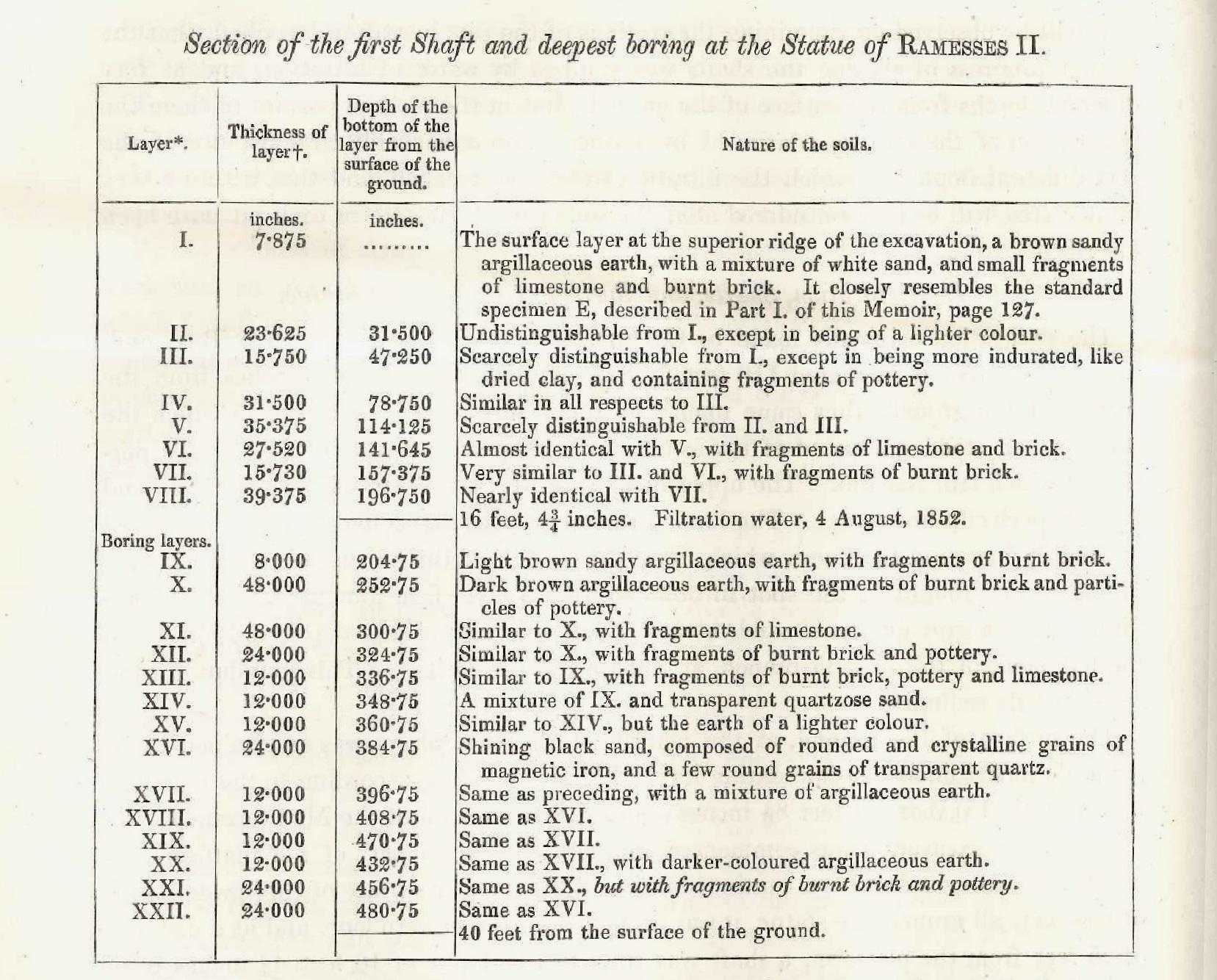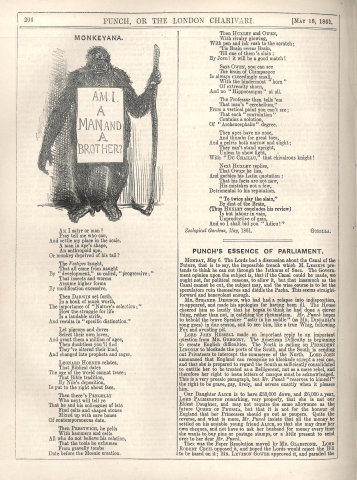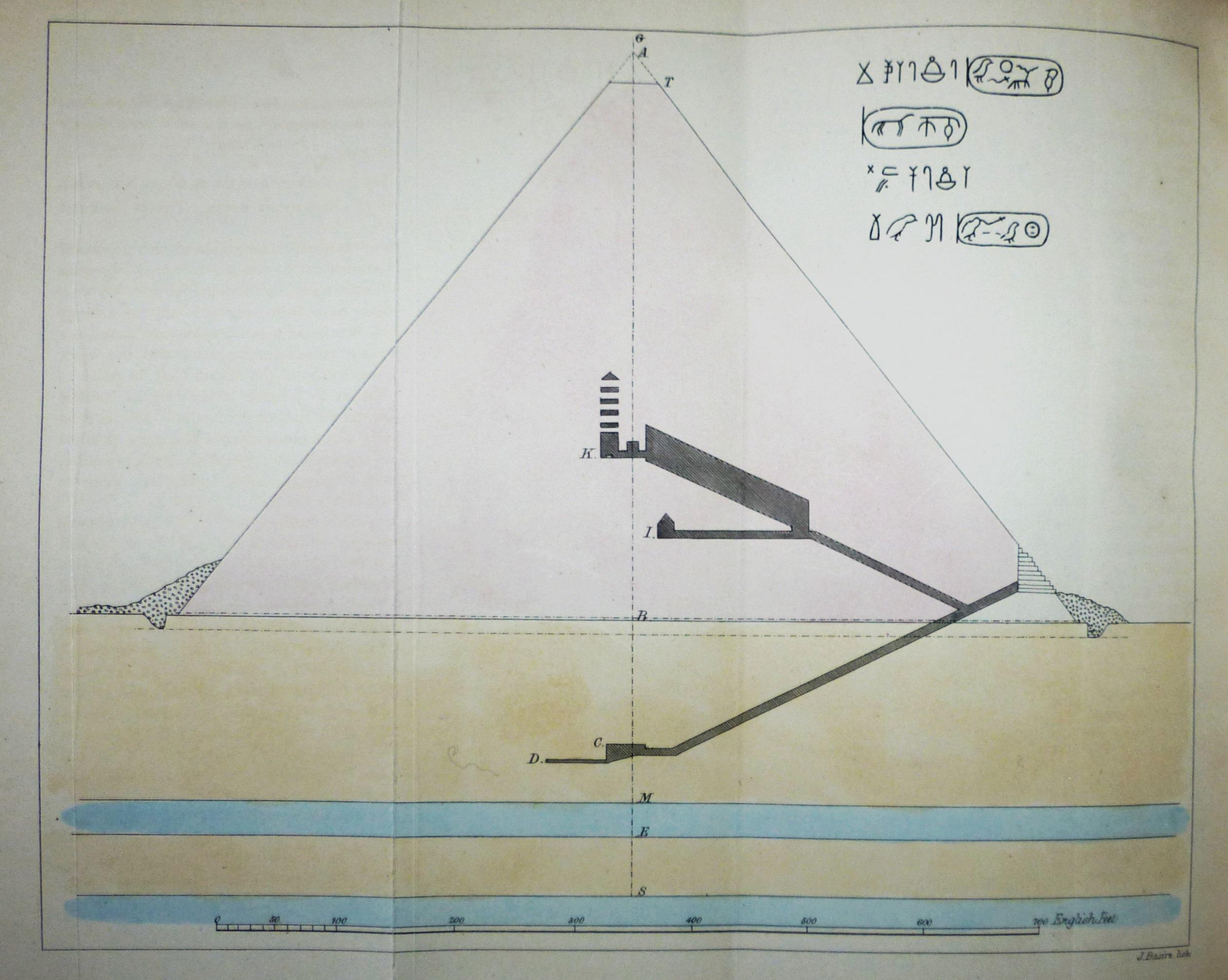The first geochronology of ancient Egypt
At an 1847 meeting of the Geological Society of London, president Leonard Horner (1785-1864) told members to start investigating a controversial topic: human chronology. Horner specifically pointed to soil sedimentation in Egypt. He argued that the combination of annual flooding and ancient artefacts in the Nile Valley made it the ‘missing link’ to connect the latest geological and earliest historical time. In a characteristic case of long-distance fieldwork, Horner employed Turkish-born, English-educated, Cairo-based engineer Joseph Hekekyan (1807-1875) to supervise geo-archaeological excavations at the ancient sites of Heliopolis and Memphis. Between 1851 and 1854 Hekekyan sent Horner hundreds of field records, including correspondence, journals, reports, maps, and sketches. From afar, Horner analyzed the Nile flood sediments that had accumulated above and below pharaonic antiquities to show that ‘civilized’ humans had lived in Egypt for at least 13,371 years. The geochronology raised private and public concerns about chronological expertise and methodology, scriptural and scientific authority, and the credibility of Egyptian informants and labour.
Adapting stratigraphy to Egyptology
The Egyptian geochronology was the first attempt to apply geological stratigraphy to human dates. Stratigraphy — the visual practice of arranging earth’s sedimentary layers in order — had been used as a relative dating tool in geology since the early nineteenth century. However, Hekekyan and Horner’s collaboration was the first time it was applied to archaeology. This technical development was a result of their corresponding relationship, individual skillsets, and their needs to act at a distance. Interestingly, stratigraphy was not used in Egyptology again until the end of the nineteenth century.
Hekekyan drew several vertical sections showing the borings he and his Egyptian team made in and around ancient Heliopolis and Memphis, which he sent to Horner. Typical of geological illustrations at the time, Hekekyan arranged the sections beside one another for comparison. It is significant that Hekekyan drew the historical architecture and artefacts as they were found in situ. (Image of vertical section can be seen in the Library display).

The table shows how Horner adapted Hekekyan’s sketches for his geological audience in Britain. It depicts the deepest excavated strata under the statue of Ramses II. Layer XXI was crucial because it contained ‘fragments of burnt brick and pottery.’ Horner used these artefacts to claim that ‘civilised’ humans with the ability to make pottery had lived in Egypt for over 13,000 years.

Leonard Horner relates,
That biblical dates
The age of the world cannot trace;
That Bible tradition,
By Nile’s deposition,
Is put to the right about face.
Horner’s geochronology was a featured stanza in the poem ‘Monkeyana,’ produced anonymously by paleontologist Philip Egerton. The poem was written from the perspective of a gorilla in the Zoological Society Gardens trying to understand his place in nature. The gorilla reviews some recent contributions to evolutionary thought before contemplating Horner’s alluvial research. The poem maintains that Horner’s was the first important attempt to understand human antiquity, followed shortly by the geological acceptance of flint hand-axes. Horner was apparently successful in demonstrating that ‘biblical dates’ cannot determine the age of the earth, and that humans were much older than ‘that Bible tradition’ had long claimed. The poem shows that by 1861 human antiquity was a topic of general discussion amongst the Victorian public and Horner and Hekekyan’s Egyptian research was central to the conversation.
Joseph Hekekyan published this obscure book after working with Horner.* He introduced the term ‘astrogeology’ which referred to the ancient application of geology and astronomy to agriculture. Hekekyan called this ‘astrogeological science’ Khemy after the ancient Egyptian term for black fertile soil. He argued that Khemy was used to construct the oldest monuments in Egypt, including the great pyramid at Giza (shown here), to protect them during annual Nile inundations. Astrogeological knowledge was preserved in the pharaonic monuments, termed ‘Siriadic’ because their measurements corresponded to the revolutions of the star Sirius. He attempted to show that Siriadic monuments were evidence of the ingenuity of ‘the remotest generations of mankind’ and that the ancients who built them were far more skilled than their modern Egyptian descendants. Hekekyan was one of several Europeanized Armenians who were members of Egypt’s bureaucratic elite and strategically advocated on behalf of European, rather than Turkish or Egyptian interests. His book aligned himself with those ‘superior’ ancients and their supposed European descendants.
* The pages of this particular copy are uncut and have never been read!
To learn more about Horner and Hekekyan's geochronological research, see Gold, Meira. “Ancient Egypt and the Geological Antiquity of Man, 1847–1863.” History of Science (October 2018). doi:10.1177/0073275318795944.
